Hair thinning, fatigue, shrinking height, erectile dysfunction, weight gain, and general health deterioration are just a few symptoms of the dreaded aging process of men.
Your forties may be the beginning of some of these root factors. So turning 40 for a man is something that he can feel clearly. If you can foresee and make sense of these changes, you may feel more in command of your aging process.
These symptoms tend to worsen with age, although the underlying physiological mechanisms that cause them are typically manageable.
Let’s look at the physiology behind some physical changes you may notice in your 40s and some research-backed solutions that can help you effectively delay those changes.
Contents
30 Changes To Men’s Bodies After 40

1) Hormone Swings

Around the time a guy enters his 40s, his testosterone levels start dropping from 1% to 2% annually. Although this concerns older men, it is not the only endocrine component that declines with age. Dehydroepiandrosterone (a precursor to testosterone), growth hormone, and melatonin all drop.
However, as we become older, our levels of follicle-stimulating hormone (FSH), luteinizing hormone (LH), cortisol (C4), and estradiol (E2) all rise.
Some hormones, like insulin, may maintain a steady level even when their receptors lose some sensitivity as we age and become less effective. These hormonal shifts can be managed with physical activity, supplements, and hormone replacement therapy.
2) Penis Seems To Have Shrunk

And here’s an unpleasant fact: the penis naturally diminishes in size as we age. Lower levels of blood flow and testosterone are to blame. If a man lives to be 70, he may have shrunk by half an inch.
By the time you reach 40, it’s unlikely that your penis will have shrunk noticeably. But if like many men, your body fat percentage has crept up, the extra fat around the mons pubis could make your penis look shorter.
Losing weight and improving your circulation may help get more blood to your organ, which may help you regain some of the splendor hidden by the fat.
3) Fall In Sperm Quality

Research shows that the older the man, the longer it takes for his spouse to conceive. Additionally, older males are associated with lower birth rates.
These results stem from the decline mentioned above in sperm quality with age, exacerbated after age 45 due to hormonal changes. Sperm concentrations, motility, morphology, seminal volume, and DNA fragmentation are all known to decline with age in males.
D-Aspartic acid, vitamin D, vitamin C, and zinc supplements are some of the approaches that have been shown to increase the quality of male sperm and, by extension, fertility. Supplements are not the only way to boost semen parameters; exercise has shown similar benefits.
Read Also: At What Age Do Men Stop Producing Sperm?
4) The Erection Is Not What It Once Was

Erections become far less frequent around the age of 40. Additionally, you can have extended refractory periods, which are the intervals between ejaculating and being able to get another erection.
Make healthier decisions and prioritize quality over quantity regarding sex as a response to everything that’s happened.
5) Your Balls Become Increasingly Baglike

The cremaster and dartos are the muscles that tighten and loosen the male scrotum, respectively. To put it simply, as you age and your muscle mass decreases, you may notice that the muscles that support your testicles aren’t as strong as they previously were. So your scrotum becomes baggy!
6) Sexual Dysfunction

As men age, they begin to experience gradual but noticeable declines in their sexual performance. When a man reaches the age of 40, for instance, he typically has three fewer erections every month.
Because hormone balance is essential to sexual functioning, age-related hormonal alterations inevitably result in sexual dysfunction. Changes in sex-related outcomes like sex dissatisfaction, erectile dysfunction, and low libido are all part of sexual dysfunction.
Better sexual performance can be achieved through maintaining a healthy hormonal balance and managing stress. Age-related sexual dysfunction can be helped by taking supplements that increase serum testosterone levels, such as testosterone and DHEA. Other vitamins, like vitamin D, zinc, and D-Aspartic Acid, are also helpful. Improving sexual performance is primarily dependent on increasing testosterone levels.
Everyday stress also harms sexual performance. Meditation and yoga, both of which have been shown to reduce stress, could be helpful in this regard.
7) The Expansion Of The Prostate
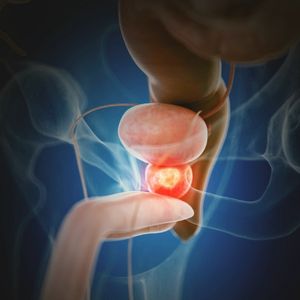
Prostate enlargement in males is a gradual process that typically begins around age 25 and results in benign prostatic hyperplasia, which is not life-threatening (BPH). The prostate swells due to the proliferation of prostatic cells, which puts stress on the urethra over time. Age-related hormone imbalance is thought to significantly impact, although the exact reason remains unclear.
The symptoms and effects of BPH make it a health issue for older men. When it comes to bladder blockages and other issues in the lower urinary system, this is by far the most prevalent cause. Consequences include a need to pee more frequently, a delay in starting to urinate, discomfort when urinating, and a stream of urine that stops and starts.
Medicines and minimally invasive surgical techniques are the only two options for treating BPH. Please see a doctor if you have any of these symptoms.
8) Wrinkles Start To Show
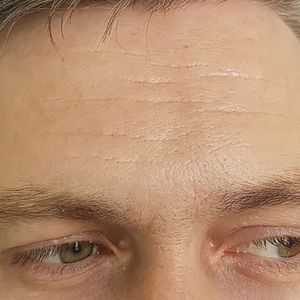
Skin is one of the first signs of aging – it becomes thinner, drier, less elastic, and less able to heal damaged tissue. Wrinkles, creases, and lines appear on the skin due to aging by the time people reach the age of forty. The best strategy to prevent wrinkles is to use a moisturizer at night, drink plenty of water, and wear sunscreen.
9) Hair Sprouts In Unexpected Places
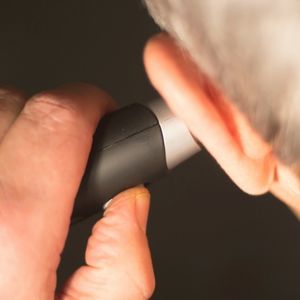
Around the time a man reaches the age of 40, he may start growing noticeable hairs in places where there were none before.
So far as we’re aware, no research has linked the presence of hair on the chin, nose, ears, or back to a person’s attractiveness!
The market has recently been flooded with new long-handled back shavers, and many men’s grooming clippers now include attachments for removing hair from the ear and nose. Tweezing is usually the best option for stray chin hair.
10) Alopecia
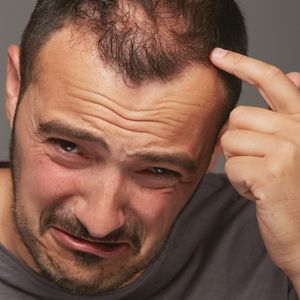
Most men experience the onset of male pattern baldness, also known as alopecia, in their 30s and 40s. It’s due to a combination of factors, including genetics and the natural decline in testosterone that men experience as they age.
Research reports that, for men, the incidence of moderate to severe hair loss increases dramatically between the ages of 40s. Even though only 16% of males aged 18–29 experience considerable hair loss, 53% of men aged 40–49 will be noticeably balding, according to the study.
If a guy wants to improve his progressive hair loss, he can do it with the help of several FDA-approved therapies, including Minoxidil and Finasteride. You might try either the solution or the foam version of Minoxidil to stimulate hair growth. It’s available without a prescription at most grocery stores and drugstores. Finasteride, available only with a doctor’s prescription, is another medicine that stimulates hair growth.
11) Hair Becomes More Silvery

As we age, the pigment cells in our hair follicles die off. That suggests a hair follicle is losing its pigmentation rather than changing color. Most Caucasians start graying around the time they hit their mid-30s, whereas Asians don’t begin until their late-30s, and African-Americans don’t start until their mid-40s.
12) Sarcopenia

Sarcopenia, or a decline in muscle mass, is a common consequence of aging. Between 1% and 5% of a man’s muscular mass is typically lost by the time he reaches age 40 due to the gradual decline in muscle cell activity. If not addressed, this decline leads to frailty and reduces the ability to engage in physical exercise as people get older. And it speeds up over time.
Several variables affect the progression of age-related sarcopenia.
- The decline in growth hormone levels
- Reduced ability to extrapolate protein energy
- Depressed motor neuron function
- Mitochondrial dysfunction
- Low-activity and inactive lifestyle
By improving antioxidant defenses and protein balance, growth hormone replacement treatment has been shown to postpone the onset of sarcopenia. Exercise is an effective treatment for sarcopenia and can also help prevent the condition.
13) Decreased immunity
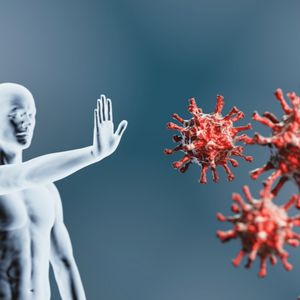
The initial line of protection, the innate immune system, and the second, more specialized line of defense, the adaptive immune system, both experience immunosenescence due to aging.
Levels of inflammation tend to be greater in middle-aged males than in young individuals. Heart disease, diabetes, obesity, and cancer are just some of the conditions that these people are more likely to develop due to this. Injury recovery also slows with age partly because of the immune system’s diminished effectiveness.
However, stress, especially chronic stress, has been proven to aggravate immunological aging; therefore, stress levels are also crucial in determining the amount of immune aging. Reducing stress is, therefore, one strategy for slowing the negative impact of aging on the immune system.
And another potent tool in the fight against immune system aging is proper nutrition. Vitamin E, zinc, and probiotics are just some supplements that have been shown to boost immunity. Reducing caloric intake is another dietary modification that can slow down immune system loss with age. Calorie restriction, or eating fewer calories than you burn, has been shown to slow the aging process, but it should be done under medical supervision to avoid serious health consequences.
14) Mitochondrial Dysfunction
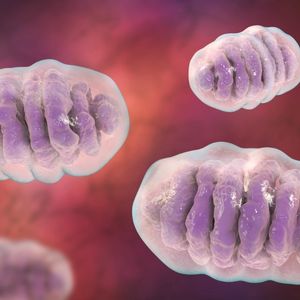
This energy is generated by mitochondria, which are found in every single cell. They are necessary for cells to get energy from their diets of carbs, lipids, and proteins. Unfortunately, their performance declines with age, notably in the heart and skeletal muscles.
Mitochondrial content, shape, activity, and production of reactive oxygen species all deteriorate with age, contributing to organ senescence and failure. Mitochondrial dysfunction has been linked to sarcopenia and heart failure in older men, two of the leading causes of aging-related physical deterioration.
But there are strategies to boost mitochondrial performance. High-intensity interval training (HIIT) and resistance training (RT) are two forms of exercise that can help. HIIT and RT have been found to reduce the risk of muscle aging by reversing the age-related reduction in muscle mitochondria.
The overexpression of nicotinamide adenine dinucleotide is another prominent strategy for improving mitochondrial activity (NAD). During the aging process, NAD, a chemical essential for mitochondrial activity, decreases. Supplementing with nicotinamide riboside (NR) or nicotinamide dinucleotide (ND) can raise levels of nicotinamide in the body (NMN). It has anti-aging properties.
15) Decreased Activation Of Brown Adipose Tissue

The human body has both white and brown adipose tissue. White adipose tissue (WAT) is responsible for storing energy in the form of fat, whereas brown adipose tissue (BAT) is responsible for burning off excess heat.
When it comes to producing heat in ways other than shivering, BAT is where it’s at. That’s why it’s important to maintain a healthy weight since it helps regulate core body temperature, calorie burn, and body mass index. Age-related adiposity, or fat gain, is caused by a reduction in BAT activity. In one study, BAT activity was shown to be above 50% in those aged 20-29 but under 10% in those aged 40 and over.
So, how can one boost BAT activation and prevent the inevitable weight gain that comes with becoming older? In response to cold, BAT activity spikes quickly. Therefore, cryotherapy is an excellent way to promote BAT activation, counteracting the effects of aging on weight gain.
16) Hyperkyphosis
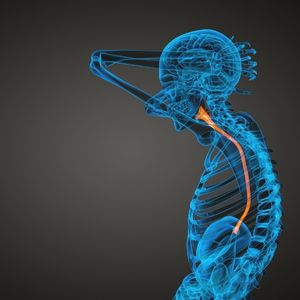
As people age, they tend to develop an abnormal curvature of the upper back, known as hyperkyphosis. This causes the characteristic hunchback of the elderly. The spines of people of all ages are naturally curved, but the degree of curvature grows with time.
The typical angle ranges from 20° to 29° between childhood and thirty. Both males and females experience a rise in the curve beyond 40; however, females do so more quickly.
Early management is critical for lifespan as spine kyphosis is associated with reduced quality of life and physical performance.
Currently, there is no hyperkyphosis treatment available through medication. However, yoga has been demonstrated to be an effective treatment and preventative measure.
17) More Pains And Discomforts

By definition, physical wear and tear accumulate with time, so as you turn 40, your aches and pains will get more severe. A prescription for reducing some of the annoyances of turning 40 includes knowing your boundaries, maintaining a healthy weight, exercising, stretching, meditating, and consulting your doctor when anything doesn’t seem right.
18) Injury Rehabilitation Times Are Lengthened
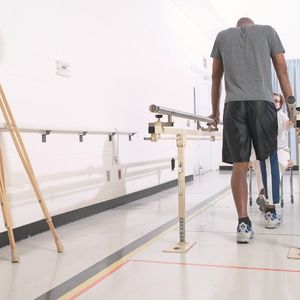
For reasons still unknown to science, recovery times for injuries become more protracted around age 40. There are several hypotheses as to why muscle healing takes so much longer with age, including cell depletion, a lack of hormonal changes that speed up the process, and an increased inflammatory response to damage. Of course, it might be a combination of the three. Anticipate investing more time than usual to rest and recover after suffering an injury.
19) Severe Hangovers

Alcohol’s adverse effects are magnified with age, according to David W. Oslin, a professor of psychiatry at the University of Pennsylvania’s Perelman School of Medicine, who spoke with The Wall Street Journal.
This is because the liver’s ability to process alcohol decreases with age and because overweight or dehydrated persons are more susceptible to alcohol’s harmful effects. To avoid waking up in such a sad state after a night on the town, try drinking water between alcoholic drinks and cutting back on how much you drink overall.
20) Teeth sensitivity Decreases

Age causes an increase in the amount of dentin, the hard tissue located between the enamel of your teeth and the nerves, in this area. The enhanced protection leads to a reduced sensitivity to pain. Because of this, it’s especially crucial to have regular checkups after turning 40 because you’re less likely to notice any problems with your teeth.
21) But Tooth Decay Increases
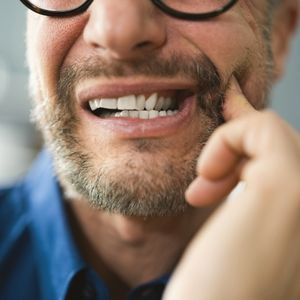
Your mouth will become drier as you get older. Your risk of tooth decay increases beyond age 40 because saliva no longer serves as an effective barrier to keep your mouth clean and free of germs that cause cavities. In response, increase your water intake and allow each sip to sit in your mouth for a few seconds before swallowing. You can also stimulate saliva production by sucking sugar-free candies or chewing sugar-free gum.
22) Cold Sickness Decreases

By the time we’re in our forties, we’ve had plenty of practice fending off the common cold and have built up sufficient immunity to rarely fall victim to it.
23) Less Sleeping
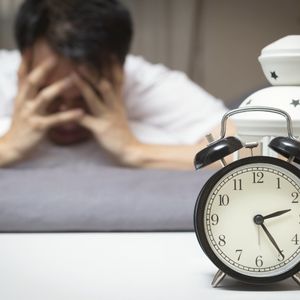
A study of 110 healthy people, which was published in The Journal of Sleep, found that people between the ages of 40 and 55 slept about 23 minutes less each night than people between the ages of 18 and 30.
There’s a common misconception that people’s sleep needs decrease with age, but this is something that the National Sleep Foundation strongly disputes. Studies show that our sleep requirements remain constant throughout maturity, as stated on their website.
24) Difficult To Lose Weight

You might recall a time when you could come back into peak physical condition by skipping breakfast and limiting your sugar intake for three days. You undoubtedly already know that many of us find it considerably more challenging to lose weight quickly once we approach 40 due to a slowed metabolism.
But many of us overlook the fact that a significant portion of having a slowed metabolism is a direct result of losing muscle mass. Because muscles require food, the more muscle mass you have will increase your resting caloric expenditure and vice versa.
25) Losing Your Height

By the time you reach 40, you might have already noticed a decrease in your own height, which can start as early as your thirties. Research by the University of Arkansas for Medical Science (UAMS) indicates that men can lose an inch between 30 and 70.
Resistance exercise can slow bone loss, and calcium and vitamin D-rich meals can help keep bones strong. Once thought to be permanent, kyphosis (a forward curve of the spine) can be improved with yoga, according to a UCLA pilot research published in the American Journal of Public Health.
The yoga practitioners in the study were found to have taller statures and more erect postures.
26) Smell And Taste Perceptions Shift

Roughly 9,000 taste bud receptors are present in every human at birth. However, the number of taste buds gradually declines with age. This means that your ability to discern the five basic tastes (sweet, sour, bitter, salty, and umami) gradually diminishes with age.
To diagnose a patient with a loss of smell or taste, doctors have them compare odors and flavors. This will let your doctor assess the extent of the damage.
27) Digestive Problems Start To Manifest
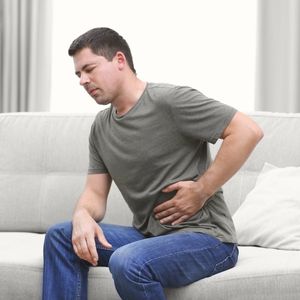
Indigestion, constipation, diverticulitis, and ulcers are all more likely as we speed into middle age. Age-related variables, such as the medications you take and a less active lifestyle, can wreak havoc on healthy digestion. If you want to avoid digestive issues, it’s important to drink enough water, keep active, eat lots of fiber, take probiotics, and consume a wide variety of fruits and vegetables. Do not hesitate to discuss with your physician any continued difficulties you may be experiencing with your digestive system.
28) Lactose Intolerance

One of the many amazing things your body does is produce an enzyme called lactase, which aids the small intestine in breaking down lactose, a disaccharide sugar made up of galactose and glucose in milk. Because lactase production declines with age, undigested lactose can reach the colon and cause not beautiful things. They cover the gamut from flatulence to gas.
If you’re concerned about developing a dairy intolerance, probiotics and trying out alternatives like goat milk, almond, rice, or cashew milk will help. Supplementing with digestive enzymes is another option.
29) Vision Problem Starts

By the time you reach 40, you may require glasses to see small types, navigate menus in the dim candlelight, or if your eyes feel drier than usual for whatever reason. You should start getting annual eye exams now that you’re at an age where all these things are possible. Eyes should be shielded from the sun with UV-blocking sunglasses and a balanced diet. Lycopene, the red pigment in tomatoes, has been linked to a lower incidence of age-related macular degeneration and glaucoma.
30) Risk For Bad Things

After the age of 40, it is essential to get routine checkups and testing to reduce the likelihood of developing cardiovascular disease, stroke, high blood pressure, cancer, and a host of other serious illnesses.
We’ll encourage you to eat healthier, get more sleep, relax, and exercise more, but we’ll also emphasize the importance of scheduling regular checkups with your doctor.
Two thousand adults aged 30 to 49 were tracked for 15 years in a research published in the Scandinavian Journal of Public Health in 2007. The study participants who engaged in preventive treatment regularly outlived the control group by a “substantially bigger” margin.
Final Words

- There are several physical changes that men may experience in their forties that may be unavoidable.
- If left untreated, these symptoms manifest physically throughout a man’s body.
- Some of the alterations in body structure that come with aging are treatable, while others can be effectively monitored and managed.

